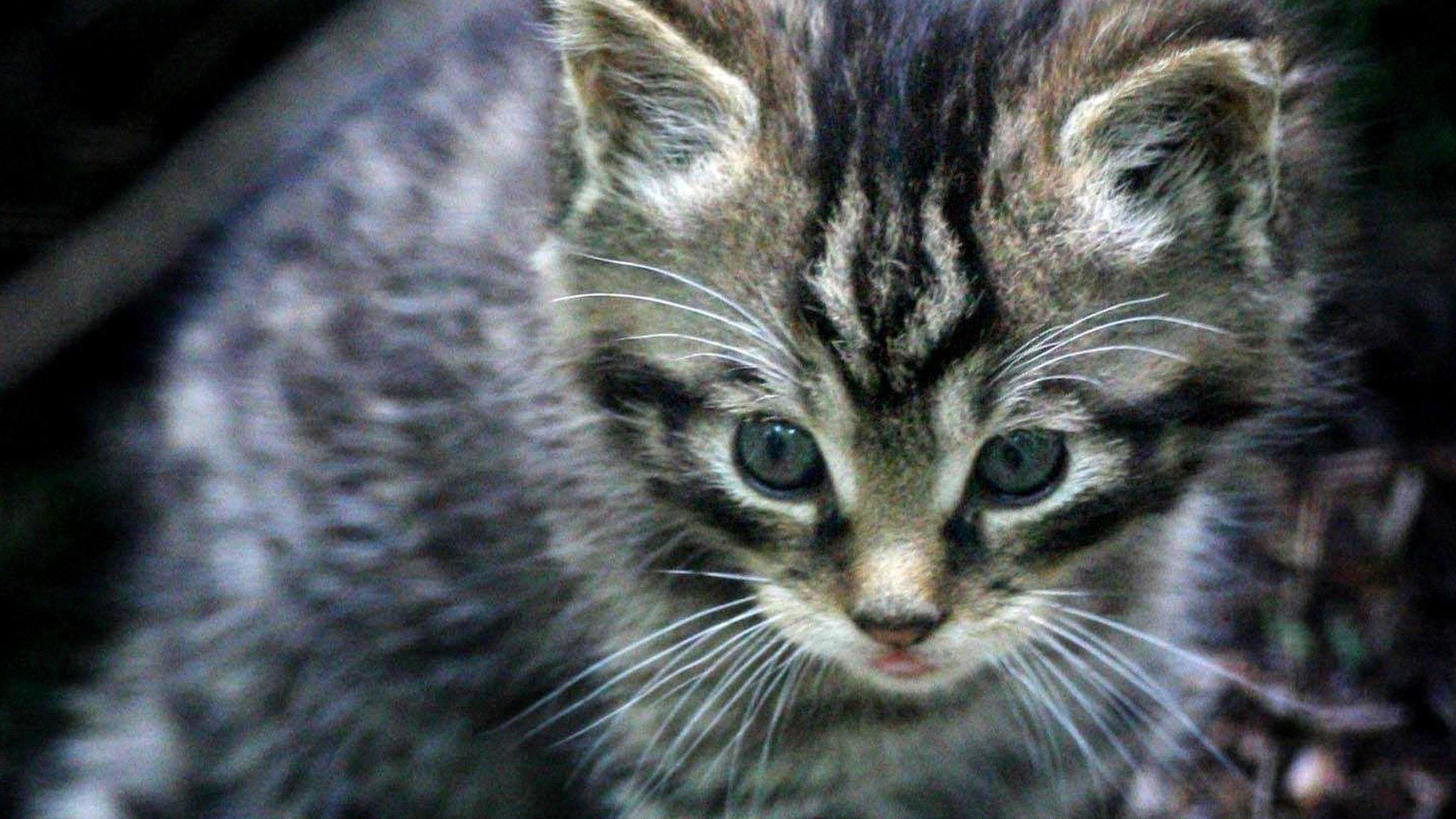Image could show wildcat near Dingwall
- Published
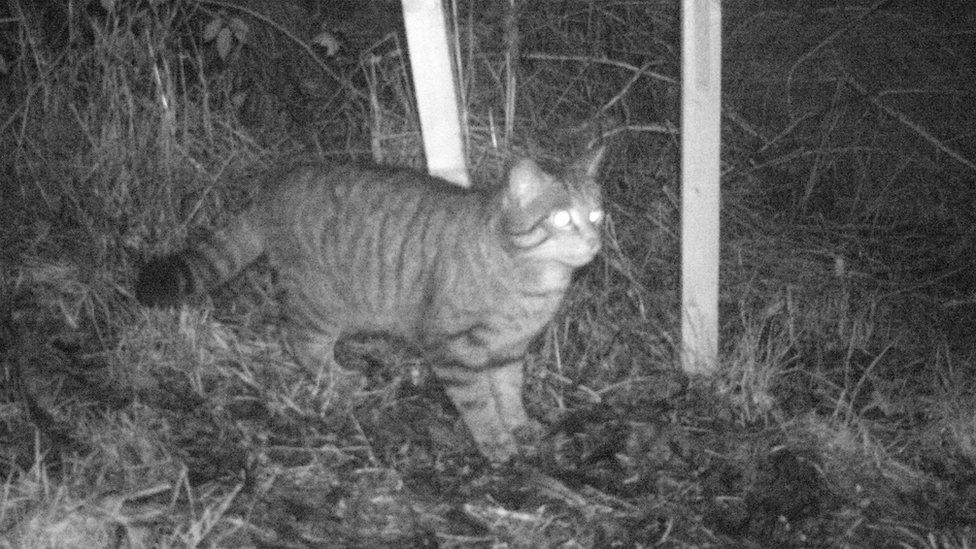
The photograph of the suspected wildcat was taken by the Scottish Wildcat Action project
An image captured at a camera trap may show a Scottish wildcat just several miles outside one of the largest towns in the Highlands.
The photograph was taken near Dingwall, about 14 miles (22km) north west of Inverness, by Scottish Wildcat Action, external.
A hybrid, a cat with a mix of domestic and wildcat ancestry, was also photographed by the same camera.
The cats were pictured in Scottish Wildcat Action's Strathpeffer priority area.
Wildcats are not known to have been previously recorded in the location where the photographs were taken.
Meanwhile, the project's camera traps in Strathbogie in Aberdeenshire have photographed unidentified cats.
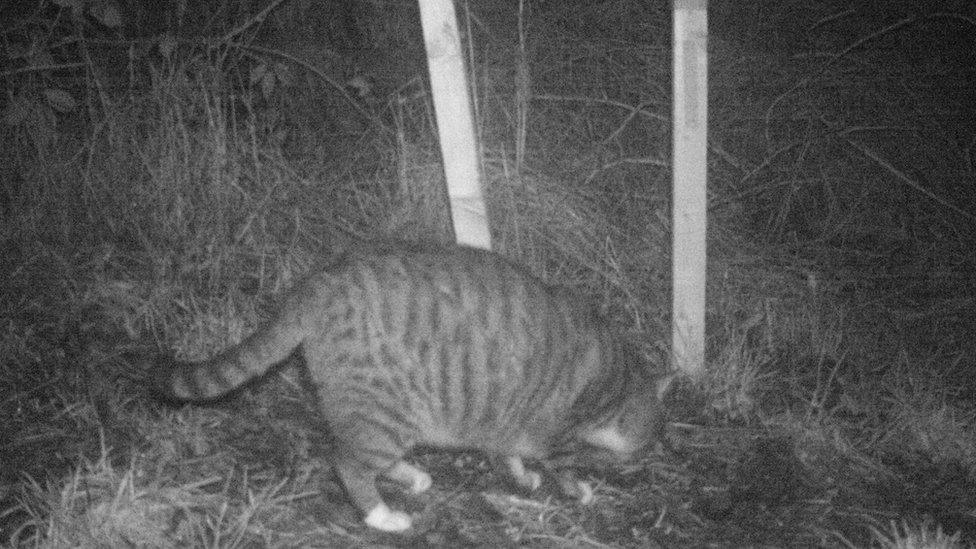
A possible domestic cat-wildcat hybrid also pictured in the Strathpeffer priority area
Scottish Wildcat Action has begun what has been described as the largest ever survey for Scottish wildcats.
The 60-day effort involves more than 300 cameras and more than 130 volunteers.
It focuses on five of Scottish Wildcat Action's six priority areas - Strathpeffer, Strathbogie, Strathavon, North Strathspey and the Angus Glens.
Work will be carried out in the other area, Morvern, later in the year.
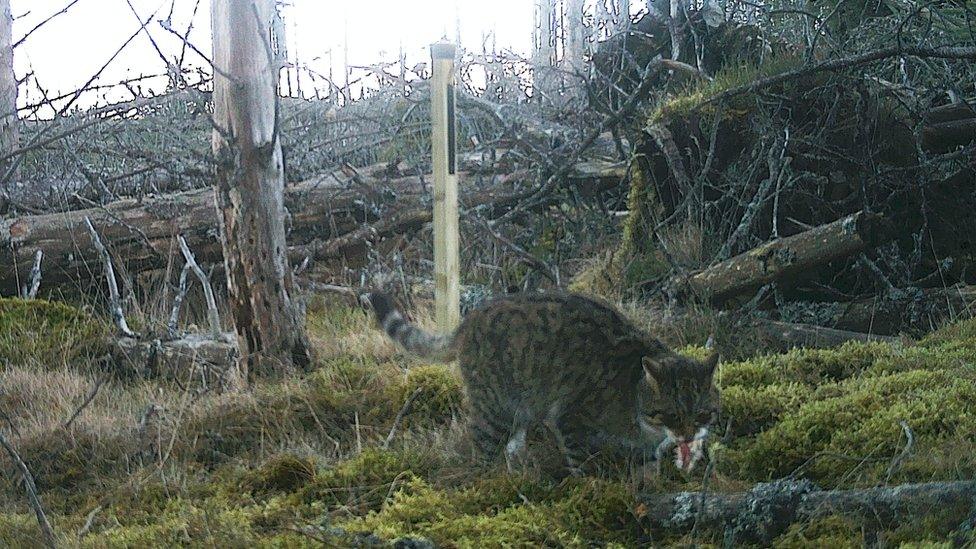
Photographs allow experts to identify wildcats from hybrid and domestic cats from the markings on their coats
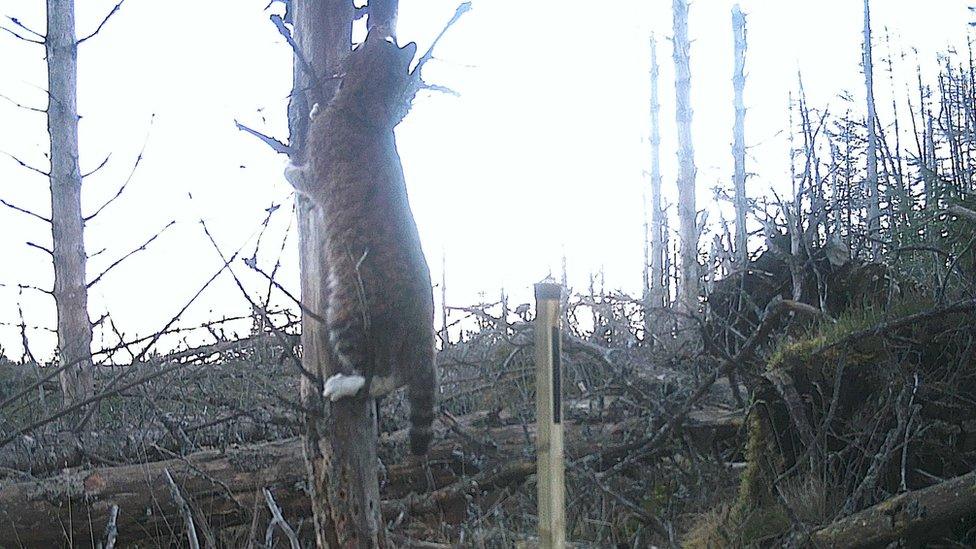
A camera trap captures a cat climbing a rotten tree stump
Photographs can be used to identify wildcats and hybrids by checking the markings on their coats and tails.
Scottish Natural Heritage, one of the project's partners, said data gathered would help inform wildcat protection measures.
These include an extensive neutering campaign to stop feral and pet cats from interbreeding with the endangered wildcats and passing disease on to them.
Last year, the project identified the Angus Glens as having the "most quality wildcats" of its priority areas.
Few pure-bred Scottish wildcats survive because of crossbreeding with feral cats and also loss of habitat and disease.
In a separate project, not involving Scottish Wildcat Action, locations on the remote Ardnamurchan peninsula in the north west Highlands was designated a Scottish wildcat sanctuary in 2014.
Domestic cats near the area have neutered to prevent them breeding with pure wildcats.
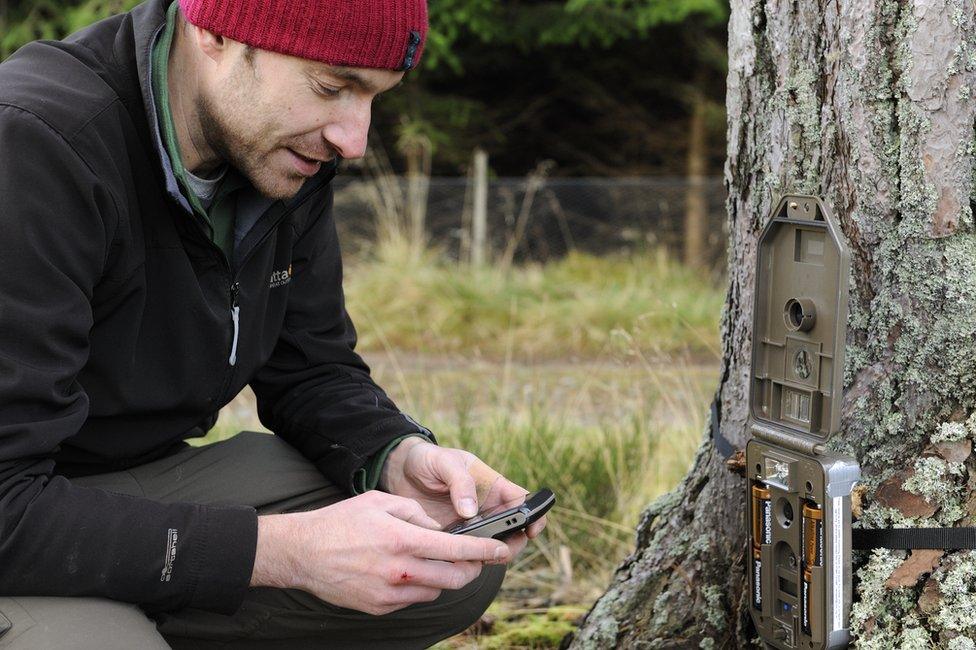
A major survey of wildcats involves more than 300 cameras
- Published21 September 2015
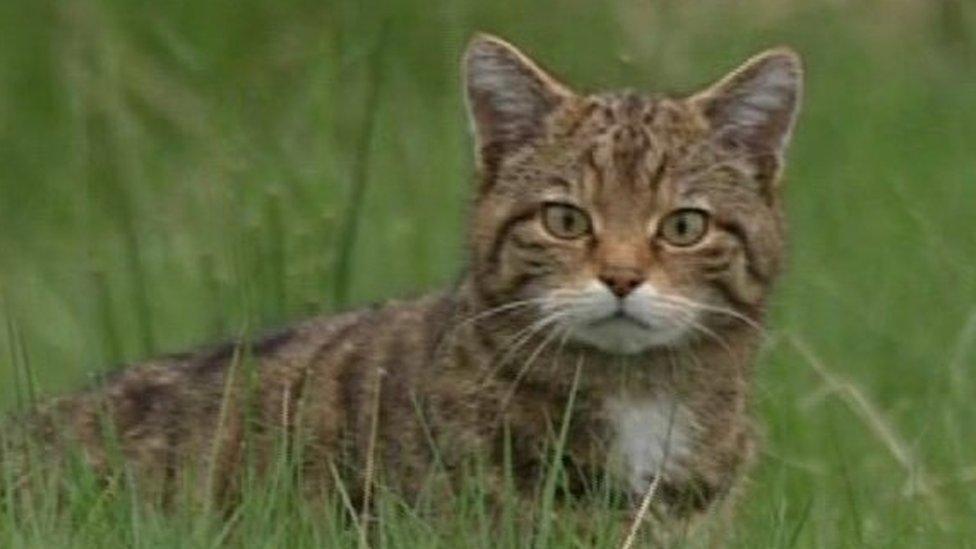
- Published23 October 2015
